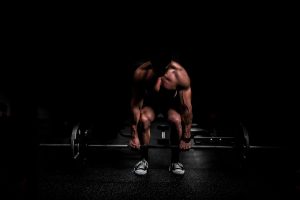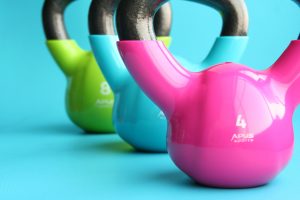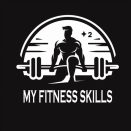INTRODUCTION
Fitness is a holistic state of well-being encompassing physical, mental, and social aspects. It reflects the ability to perform daily tasks with vigor and resilience. Regular exercise, proper nutrition, and mental well-being are integral components of maintaining a healthy and fit lifestyle. Whether through cardiovascular activities, strength training, or mindfulness practices, investing in fitness contributes to enhanced longevity, improved mood, and overall quality of life.
IMPORTANCE OF FITNESS
Fitness is crucial for various reasons, impacting both physical and mental well-being. Here are some key reasons highlighting the importance of fitness:
1.Physical Health Regular exercise helps maintain a healthy weight reducing the risk of chronic conditions like obesity diabetes and heart disease.
2.Muscle and Bone Strength Strength training promotes muscle and bone health reducing the risk of osteoporosis and enhancing overall strength and stability
3.Flexibility and Joint Health Stretching exercises improve flexibility and joint mobility reducing the likelihood of injuries and enhancing overall movement.
4.Improved Immune System Regular exercise boosts the immune system helping the body fight off infections and illnesses.
5.Enhanced Sleep Regular physical activity contributes to better sleep quality, aiding in overall health and well-being.
6.Increased Energy Levels Engaging in physical activity enhances energy levels reducing feelings of fatigue and lethargy.
7.Social Benefits Participating in group fitness activities fosters social connections contributing to a sense of community and well-being.
8.Longevity Studies suggest that maintaining a healthy lifestyle including regular exercise is associated with increased life expectancy.
Remember the key is to find a fitness routine that suits your preferences and lifestyle. Even small consistent efforts can have a significant impact on overall health and quality of life. Always consult with healthcare professionals before starting a new fitness program especially if you have pre-existing health conditions.
TYPES OF FITNESS
Fitness comprises various components including
1.Cardiorespiratory Fitness Involves activities that elevate the heart rate and improve the efficiency of the cardiovascular and respiratory systems, such as running, swimming, or cycling.
2.Muscular Strength Focuses on the amount of force a muscle or group of muscles can exert often through resistance training exercises like weightlifting
3.Muscular Endurance The ability of muscles to sustain contractions over an extended period crucial for activities like repetitive weightlifting or bodyweight exercises
4.Flexibility Refers to the range of motion in joints and muscles. Stretching exercises yoga or Pilates can enhance flexibility
5.Body Composition Involves the proportion of fat and nonfat mass in the body. Achieving a healthy body composition often requires a combination of proper nutrition and regular exercise
6.Balance and Coordination Essential for stability and preventing injuries Activities like yoga or specific balance exercises contribute to improving these aspects.
7.Agility Involves the ability to move quickly and change direction efficiently. It’s relevant in sports and can be enhanced through specific drills.
8.Speed The ability to move quickly in a specific direction. Speed training is common in sports and can sprinting or agility drills.
9.Power Combines strength and speed representing the ability to exert force rapidly Plyometric exercises are examples of activities that develop power
10.Mental and Emotional Well-being While not physical, mental and emotional health is integral to overall fitness. Activities like meditation and mindfulness contribute to this aspect.
Choosing a combination of these components based on individual goals and preferences promotes a well-rounded approach to fitness.
Top 5 Essential Exercises
1.Squats
-Promotes overall lower body strength and functional movement.
2.Deadlifts
– Builds core strength and improves overall body stability.
3.Push-ups
– Enhances upper body strength and is easily modifiable for different fitness levels.
4.Pull-ups/Chin-ups
– Targets the back, biceps, and forearms.
– Builds upper body strength and improves grip.
5.Planks
– Enhances overall core stability and is effective for preventing lower back issues.
These exercises provide a comprehensive full-body workout, covering major muscle groups and promoting functional strength. However individual fitness goals and preferences should guide exercise selection. Always ensure proper form and if needed consult with a fitness professional to tailor a routine to your specific needs.
WORKOUT PLANS
Certainly! Here’s a simple full-body workout plan for beginners. Adjust the intensity and volume based on your fitness level, and consult with a fitness professional if needed.
Day 1: Full Body Strength
- Squats: 3 sets x 10 reps
- Push-ups: 3 sets x 10 reps
- Bent-over Rows:3 sets x 10 reps (use dumbbells or a barbell)
- Planks:3 sets x 30 seconds to 1 minute
Day 2: Cardio and Flexibility
- Cardiovascular Exercise (e.g., Jogging, Cycling, or Jumping Jacks): 20-30 minutes
- Stretching: Focus on major muscle groups, holding each stretch for 15-30 seconds
Day 3: Active Recovery or Rest
Engage in light activity like walking or yoga for active recovery or take a complete rest day.
Day 4: Full Body Strength
1.Deadlifts: 3 sets x 8 reps
2.Push-ups (or Dumbbell Chest Press):3 sets x 10 reps
3.Pull-ups or Lat Pulldowns: 3 sets x 8 reps
4.Russian Twists: 3 sets x 15 reps per side
Day 5: Cardio and Flexibility
Repeat the cardio and flexibility routine from Day 2.
Day 6: Active Recovery or Rest
Similar to Day 3 engage in light activity or take a complete rest day.
Day 7: Rest
Allow your body to fully recover.
Adjust the number of sets and reps based on your fitness level, gradually progressing as you become more comfortable. Listen to your body, and if you have any health concerns or conditions, consult with a healthcare professional before starting a new workout routine.
NUTRITION AND FITNESS
1.Balanced Diet:
– Include a mix of macronutrients (carbohydrates, proteins, and fats) in your meals to provide sustained energy and support various bodily functions.
2.Protein Intake:
– Good sources include lean meats, fish, eggs, dairy, legumes, and plant-based options like tofu.
3.Carbohydrates:
– They are essential for workouts and daily activities.
4.Healthy Fats:
– Include sources of healthy fats, such as avocados, nuts, seeds, and olive oil, for overall health and to support joint function.
5.Hydration:

– Water is crucial for proper digestion, nutrient absorption, and
temperature regulation.
6.Meal Timing:
– Consider timing meals around workouts. Have a balanced meal with carbohydrates and protein about 2-3 hours before exercising and a snack afterward to support recovery.
7.Portion Control:
– Be mindful of portion sizes to avoid overeating. Pay attention to hunger and fullness cues.
8.Vitamins and Minerals:
– Ensure adequate intake of vitamins and minerals through a variety of fruits, vegetables, and whole foods. Consider supplements if there are specific deficiencies.
9.Post-Workout Nutrition:
– Consume a combination of protein and carbohydrates after workouts to aid muscle recovery and replenish glycogen stores.
Remember, individual nutritional needs may vary based on factors like age, gender, activity level, and health conditions. It’s advisable to consult with a registered dietitian or nutritionist to create a personalized plan aligned with your fitness goals and health status.
FITNESS GEAR AND GADGETS
Fitness gear and gadgets can enhance your workout experience and help you track progress. Here are some popular options:
1.Fitness Tracker:
– Monitors daily activities, tracks steps, calories burned, and provides insights into sleep patterns.
2.Smartwatch: 
– Combines fitness tracking with additional features like notifications, GPS, and music control. Popular options include Apple Watch, Samsung Galaxy Watch, and Garmin Venu.
3.Wireless Earbuds:
– Provide freedom of movement during workouts. Look for sweat-resistant and secure-fit options from brands like Apple AirPods, Jabra, or Bose..
4.Smart Scale:
– Measures not only weight but also body composition metrics like body fat percentage and muscle mass. Brands like Withings and Fitbit offer smart scale options.
5.Resistance Bands:
– Versatile and compact, these bands add resistance to strength training exercises. They’re great for home workouts or adding intensity to gym sessions.
6.Foam Roller:
– Aids in muscle recovery and flexibility by targeting tight spots. It’s a useful tool for self-myofascial release.
7.Yoga Mat:
– Provides a comfortable surface for floor exercises, yoga, or stretching routines. Look for non-slip and cushioned options.
8.Smart Water Bottle
– Reminds you to stay hydrated and tracks your water intake. Some bottles sync with fitness apps to provide personalized hydration goals.
Remember to choose gear and gadgets based on your fitness goals and preferences. While these can enhance your fitness journey, the most important factor is consistency and dedication to your workouts.
COMMON MISTAKES TO AVOID
1.Skipping Warm-ups and Cool-downs:
– Neglecting these can increase the risk of injury and hinder recovery.
2.Overtraining:
– Giving your body insufficient time to rest and recover can lead to fatigue, decreased performance, and increased risk of injury. Allow for rest days and prioritize quality over quantity in your workouts.
3.Poor Form:
– Using improper form during exercises can compromise effectiveness and lead to injuries. Focus on maintaining proper technique, even if it means using lighter weights or modifying movements.
4.Ignoring Nutrition:
– Neglecting a balanced diet can hinder your fitness progress. Ensure you’re fueling your body with the right nutrients, especially considering pre and post-workout nutrition.
5.Setting Unrealistic Goals:
– Ambitious goals are great, but setting unrealistic expectations can lead to frustration and burnout.
6.Neglecting Recovery:
– Recovery is integral to progress. Ensure adequate sleep, hydration, and consider incorporating activities like stretching, foam rolling, or massages to aid in recovery.
7.Not Listening to Your Body:
– Pushing through pain or fatigue without listening to your body’s signals can lead to injuries. Pay attention to discomfort and make necessary adjustments to your workout routine.
8.Focusing Solely on Cardio or Strength:
– A well-rounded fitness routine includes both cardiovascular and strength training. Neglecting one over the other can result in an imbalanced physique and overall fitness level.
9. Lack of Consistency:
– Inconsistency in workouts can impede progress. Establish a realistic and sustainable routine to maintain long-term commitment.
Avoiding these common mistakes contributes to a safer, more effective, and enjoyable fitness experience. Listen to your body, stay patient, and make adjustments as needed to support your overall well-being.
next . weight loss

